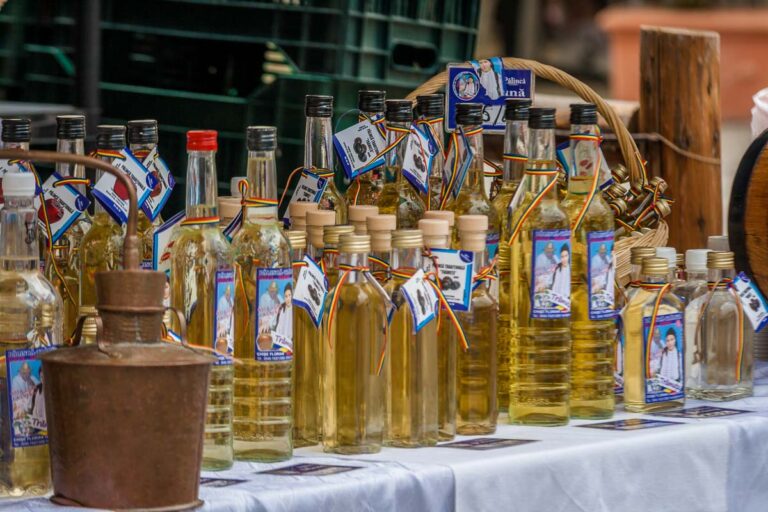Introduction: Romania’s Beverage Culture
Romania is a country known for its rich culture and traditions, and its vibrant beverage scene is no exception. From traditional drinks to modern beverages, Romania has a diverse range of options that cater to every taste and preference. The country’s beverage culture is influenced by its geography, history, and climate, which have all contributed to the development of unique and distinct drinks.
Romanians are known for their love of food and drink, and it is not uncommon to find people enjoying a beverage with their meal or socializing with friends over drinks. Whether it’s a cold beer on a hot summer day or a warm cup of tea during the winter months, there is always a beverage to suit the occasion in Romania.
The Traditional Romanian Drink: Tuica
Tuica is a traditional Romanian spirit that has been distilled for centuries. It is made from plums or other fruits, and its alcohol content ranges from 25% to 60%. Tuica is often consumed as an aperitif, and it is believed to aid digestion. It is also used in cooking, particularly in the preparation of traditional dishes.
Tuica has a strong flavor and aroma, and it is usually served chilled or at room temperature. It is a popular drink among Romanians, particularly in rural areas where it is often made in small batches by families for personal consumption or as gifts for friends and neighbors.
Romania’s National Drink: Wine
Wine has been produced in Romania for over 2,000 years, and the country’s climate and soil are ideal for growing grapes. Romania is the 13th largest wine producer in the world, and its wines are known for their high quality.
The most popular grape varieties in Romania are Feteasca Neagra, Feteasca Alba, and Riesling. Red and white wines are both popular, and they are often consumed with meals or as a standalone drink. Wine tasting is also a popular activity in Romania, and there are many vineyards that offer tours and tastings.
Beer and Soft Drinks in Romania
Beer is a popular beverage in Romania, and there are several local and international brands available. Ursus, Ciuc, and Timisoreana are some of the most popular Romanian beer brands, while Heineken and Carlsberg are also widely available.
Soft drinks such as Coca-Cola, Pepsi, and Fanta are also popular in Romania, particularly among younger generations. Fruit juices and mineral water are also widely consumed.
Tea and Coffee in Romanian Culture
Tea has a long history in Romania, and it is often consumed with honey and lemon. Herbal teas such as chamomile, mint, and sage are also popular, particularly for their medicinal properties.
Coffee is also a popular beverage, and it is often consumed at coffee shops or cafes. Espresso and cappuccino are popular choices, and there are many specialty coffee shops that offer a wide range of blends and flavors.
Conclusion: A Diverse and Delicious Beverage Scene in Romania
Romania’s beverage scene is diverse and delicious, with something to suit every taste and preference. Whether it’s a traditional spirit like Tuica, a glass of wine, a cold beer, or a warm cup of tea or coffee, there is always a beverage to enjoy in Romania. So, the next time you visit Romania, be sure to explore its vibrant beverage culture and discover the unique flavors and traditions that make it so special.

